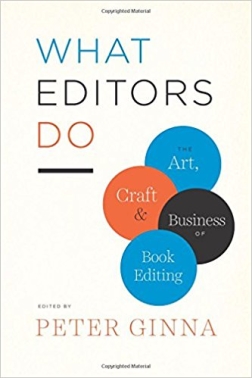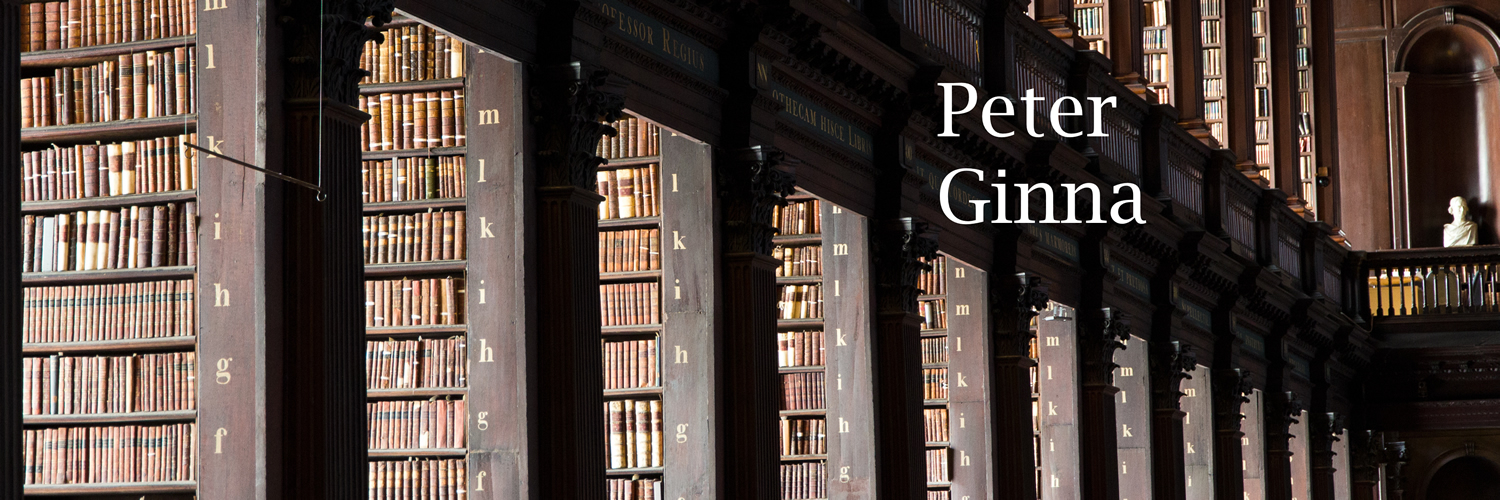What Editors Do

Editing is an invisible art where the very best work goes undetected. Editors strive to create books that are enlightening, seamless, and pleasurable to read, all while giving credit to the author. This makes it all the more difficult to truly understand the range of roles they inhabit while shepherding a project from concept to publication.
In What Editors Do, Peter Ginna gathers essays from twenty-seven leading figures in book publishing about their work. Representing both large houses and small, and encompassing trade, textbook, academic, and children’s publishing, the contributors make the case for why editing remains a vital function to writers—and readers—everywhere.
Ironically for an industry built on words, there has been a scarcity of written guidance on how to actually approach the work of editing. This book will serve as a compendium of professional advice and will be a resource both for those entering the profession (or already in it) and for those outside publishing who seek an understanding of it. It sheds light on how editors acquire books, what constitutes a strong author-editor relationship, and the editor’s vital role at each stage of the publishing process—a role that extends far beyond marking up the author’s text.
This collection treats editing as both art and craft, and also as a career. It explores how editors balance passion against the economic realities of publishing. What Editors Do shows why, in the face of a rapidly changing publishing landscape, editors are more important than ever.
This book is part of the series Chicago Guides to Writing, Editing, and Publishing.
Contents
Introduction. The Three Phases of Editing
Part I. Acquisition: Finding the Book
1 Where It All Begins by Peter Ginna
2 The Alchemy of Acquisitions: Twelve Rules for Trade Editors by Jonathan Karp
3 Thinking Like A Scholarly Editor: The How and Why of Academic Publishingby Gregory M. Britton
4 The Lords of Disciplines: Acquiring College Textbooks by Peter Coveney
Part II. The Editing Process: From Proposal to Book
5 The Book’s Journey by Nancy S. Miller
6 What Love’s Got to Do With It: The Author– Editor Relationship by Betsy Lerner
7 The Other Side of the Desk: What I Learned about Editing When I Became a Literary Agent by Susan Rabiner
8 Open-Heart Surgery or Just a Nip and Tuck? Developmental Editing by Scott Norton
9 This Just Needs a Little Work: On Line Editing by George Witte
10 toward Accuracy, Clarity, and Consistency: What Copyeditors Do by Carol Fisher Saller
Part III. Publication: Bringing the Book to the Reader
11 The Flip Side of the Pizza: The Editor as Manager by Michael Pietsch
12 Start Spreading the News: The Editor as Evangelist by Calvert D. Morgan Jr.
13 The Half-Open Door: Independent Publishing and Community by Jeff Shotts
Part IV. From Mystery to Memoir: Categories and Case Studies
14 Listening to the Music: Editing Literary Fiction by Erika Goldman
15 Dukes, Deaths, and Dragons: Editing Genre Fiction by Diana Gill
16 Marginalia: On Editing General Nonfiction by Matt Weiland
17 Once Upon a Time Lasts Forever: Editing Books for Children by Nancy Siscoe
18 Lives That Matter: Editing Biography, Autobiography, and Memoir by Wendy Wolf
19 Of Monographs and Magnum Opuses: Editing Works of Scholarship by Susan Ferber
20 Reliable Sources: Reference Editing and Publishing by Anne Savarese
21 The Pink Should be a Surprise: Creating Illustrated Books by Deb Aaronson
Part V. Pursuing a Publishing Career: Varieties of Editorial Experience
22 Widening the Gates: Why Publishing Needs Diversity by Chris Jackson
23 The Apprentice: On Being an Editorial Assistant by Katie Henderson Adams
24 This Pencil for Hire: Making a Career as a Freelance Editor by Katharine O’Moore-Klopf
25 The Self-Publisher as Self-Editor by Arielle Eckstut and David Henry Sterry
26 A New Age of Discovery: The Editor’s Role in a Changing Publishing Industry by Jane Friedman
Conclusion. As Time Goes By: The Past and Future of Editing
Acknowledgments
Glossary
Further Resources
About the Editor
Index










